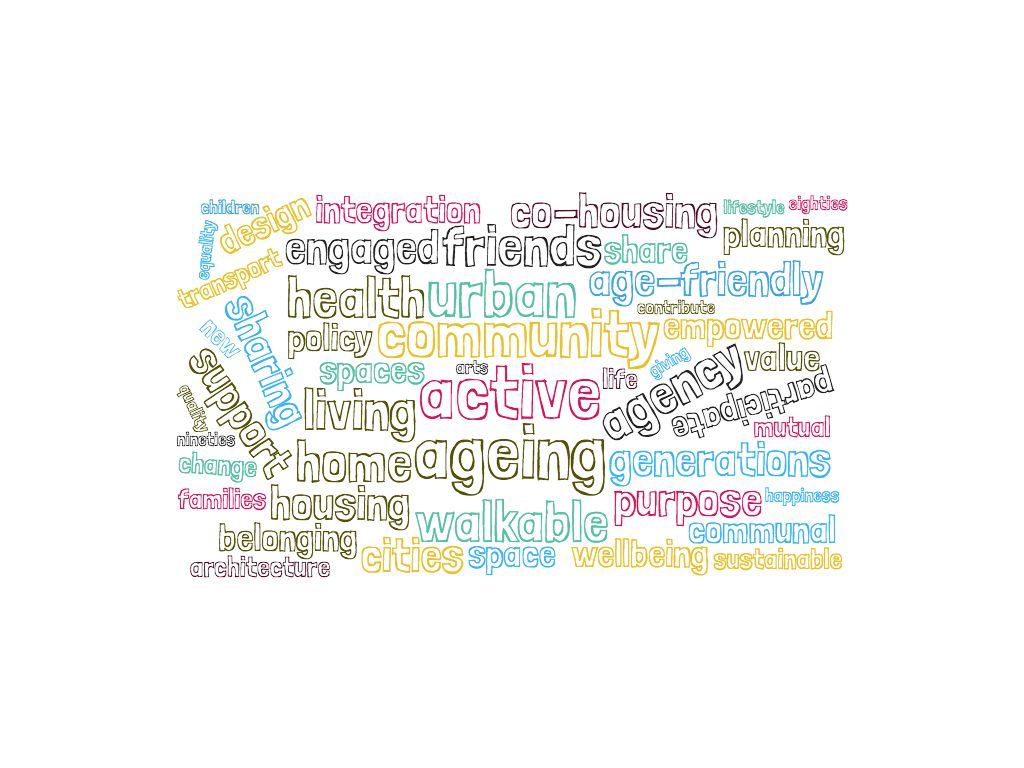Cohousing? Before talking about what cohousing IS, it is important to be very clear about what it ISN’T. Cohousing is NOT a 21st century name for a commune or a kibbutz or a student share house or whatever concept might spring unbidden to your mind’s eye. Nup. Let’s be clear up front. Unlike a commune or sometimes a co-op structure, cohousing community members do not share personal income as part of the model. It’s not a shared economy in that sense.
Cohousing describes a housing model (as in ‘a type of place where people live’, like freestanding houses, adjoined houses, apartments, duplexes, units etc etc) where a group of people intentionally agree to work together to create a place where they can all live close to one another – independently in their own separate ‘homes’ – but sharing certain things as part of a broader community venture.
The key element is that the parties agree to (and actively want) to share certain aspects of their lives. They want to provide friendship and support – that’s a given – but they also want to do things like share meals together a couple of times a week, participate in some social activities and share some of the chores.
A cohousing project would always include a communal kitchen and dining space for those shared meals but it might also incorporate a shared garden, including the growing of fruit and vegetables; or a shared laundry; shared tools and equipment like lawn mowers, hedge trimmers or even a large screen tv in a shared media room. Where there are a number of people with similar work, health or hobby interests, there might be things like a shared music room, workshop, art studio, gym or yoga room. There might be extensive storage space for sporting equipment; shared office space; meeting rooms or even a swimming pool. Because one of the principles of cohousing is collaborative design, the options can be as many and varied as the members would like… and can afford!
It’s co-housing if…
- There is genuine ‘co-design’ – the future residents of the cohousing community participate – together with the architect and other professionals – in the design to ensure it meets their particular needs and has the features they want.
- There are lots of common facilities, designed to be shared, which are always supplemental to private residences. Participating in the community is always optional, not required.
- The physical design promotes positive community interaction at a number of levels – while enabling individual privacy for all residents.
- The residents are in charge of managing the community themselves. They meet regularly to solve problems and develop policies for the community, usually over a shared meal!
- Consensus rules! There is no hierarchical structure in the decision making. Naturally there are leadership roles in cohousing communities, however no one person (or persons) has authority over others. [Click here to understand more about how this works.]
- There is no shared economy. The community is not a source of income for its members. Occasionally, a cohousing community will pay one of its residents to do a specific (usually time-limited) task, but more typically the work will be considered that member’s contribution to the shared responsibilities.


Thanks Keryn
A nice piece
Margot
Sent from my iPad
LikeLike
This is a brilliant idea that my sisters (who unfortunately, don’t all live in the same country as I do) and several friends have been exploring. I hope this project will come to fruition as it will certainly serve many of us.
LikeLike
Thank you for this. Like many my friends and l have been pkong a stick at this idea for years. I will use the information posted to start some real discussions.
LikeLike
Hi Alexis, sorry for late reply. We all still work and it is the Christmas rush. A good place to start is to bring people together to test the seriousness, that’s what we did. But there are a few resources. Books like “Low Impact Living” by Paul Chatterton takes you through the process of the LILAC community in Leeds. You can also google LILAC or YouTube it to get an idea of what it is like. The other books/ manuals would be Catherine Mc Camant and Charles Durrett’s books “Creating Cohousing” and “The Seniors Cohousing Handbook”, you may have to order these online. Good luck and stay in touch. Cohousing Australia is just developing into a network of interested people and groups.
LikeLike
Ooops should read “poking” a stick
LikeLike
Thanks! A small suggestion: remove the hyphen from your subheading. You have captured succinctly the major features of cohousing. Hypenating starts to muddy the waters again.
LikeLike
[…] Keryn Curtis, October 28, 2020 […]
LikeLike